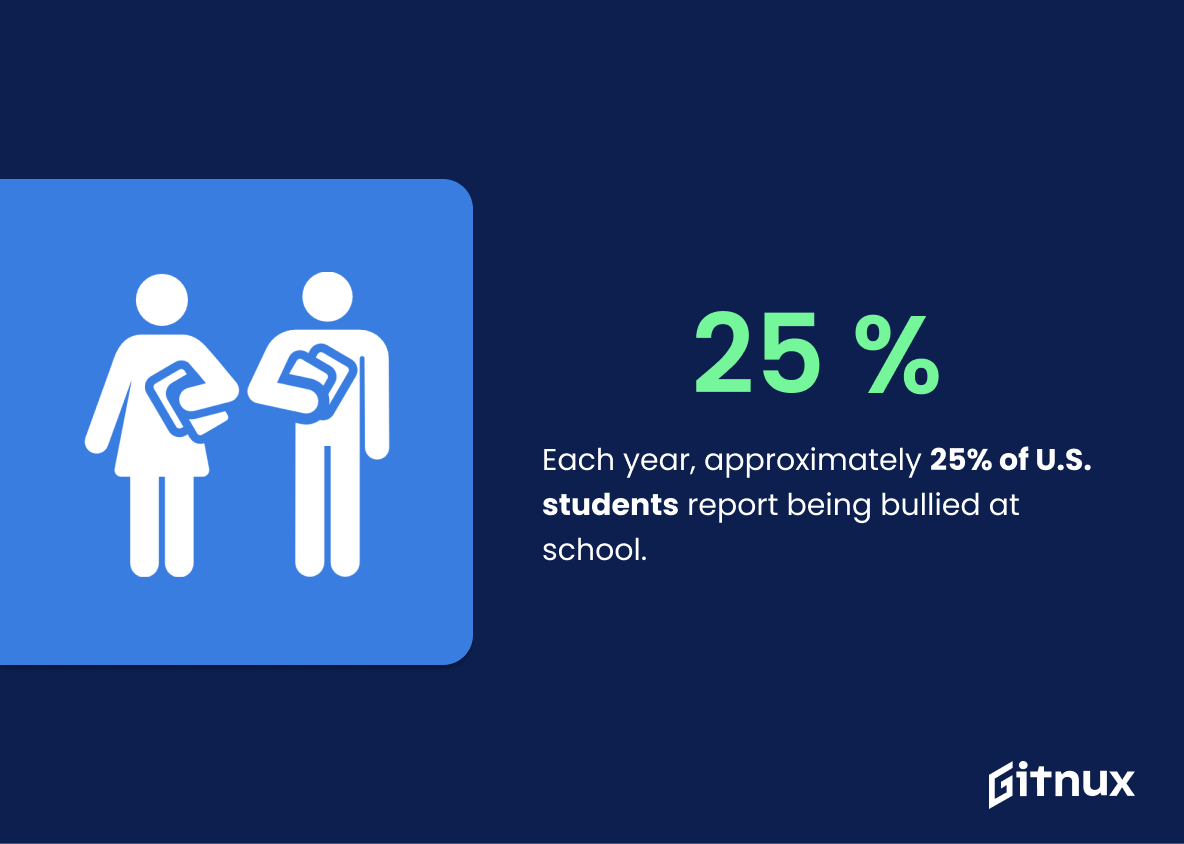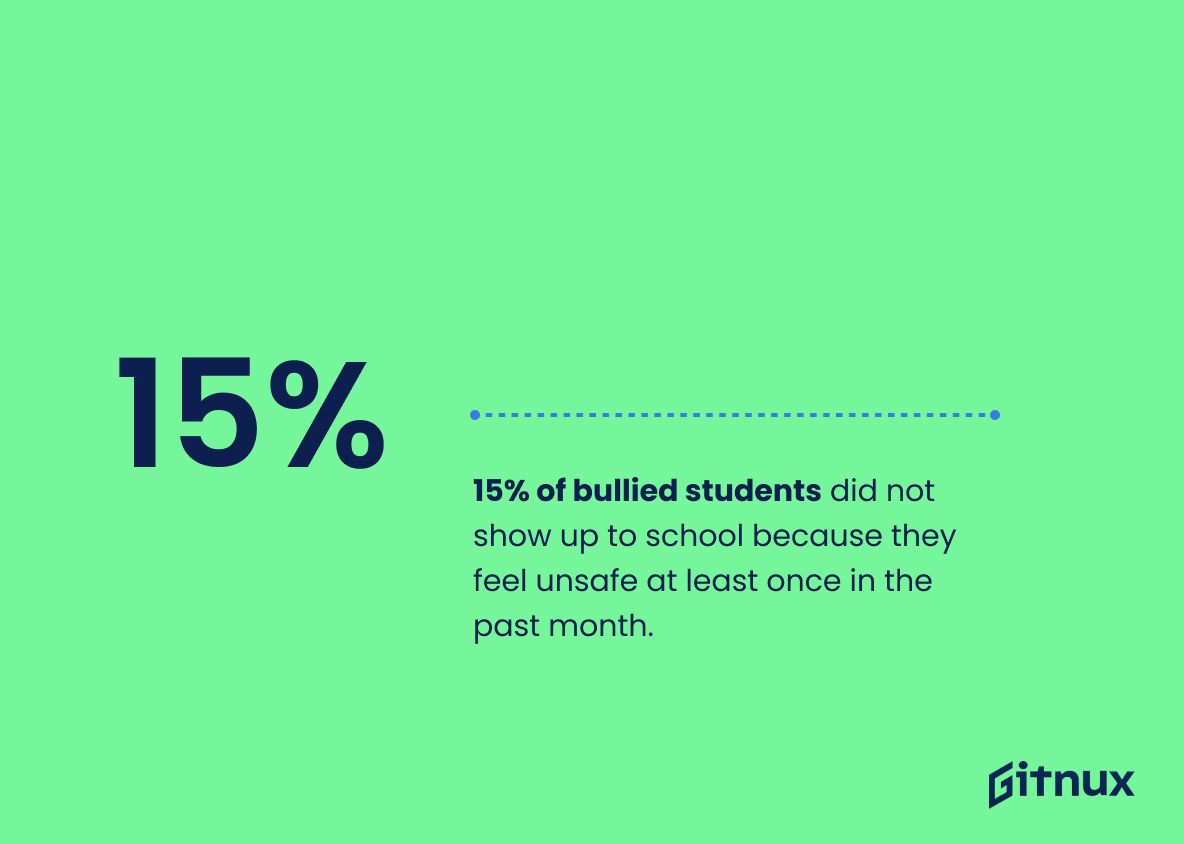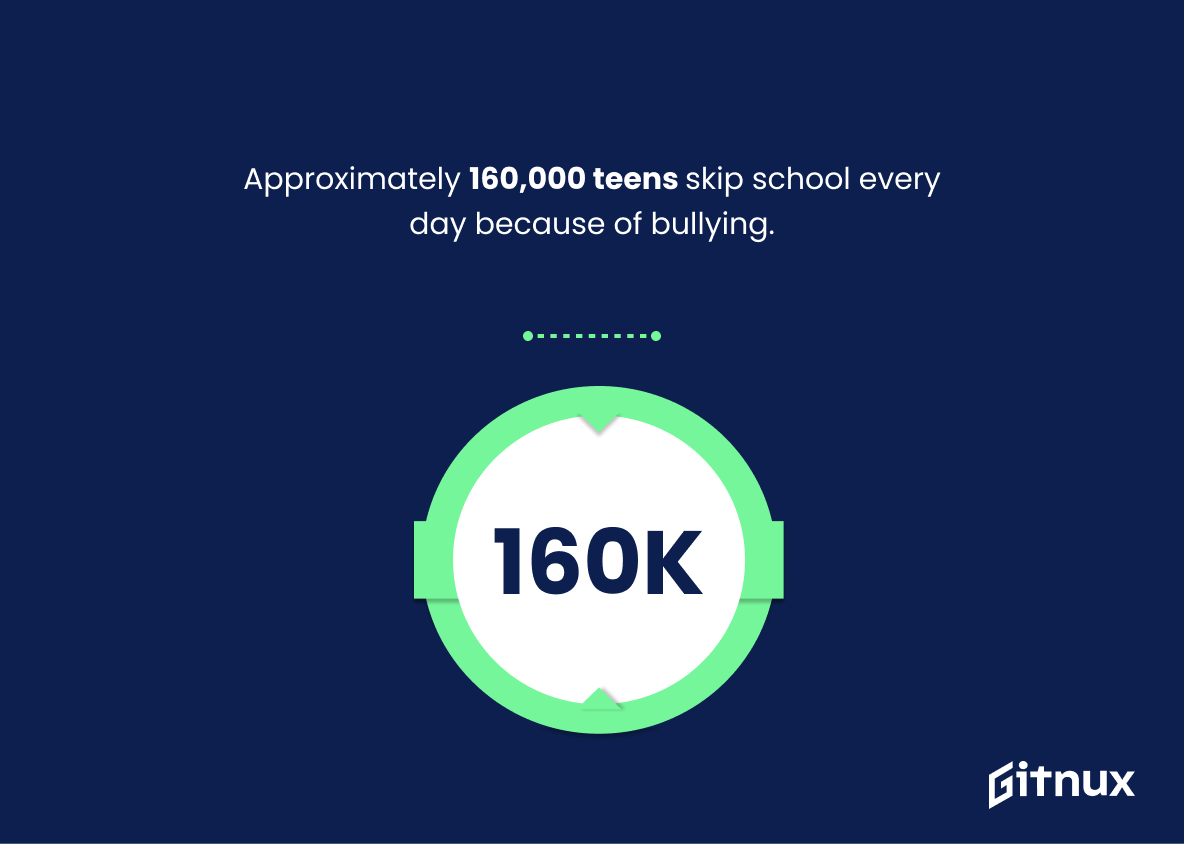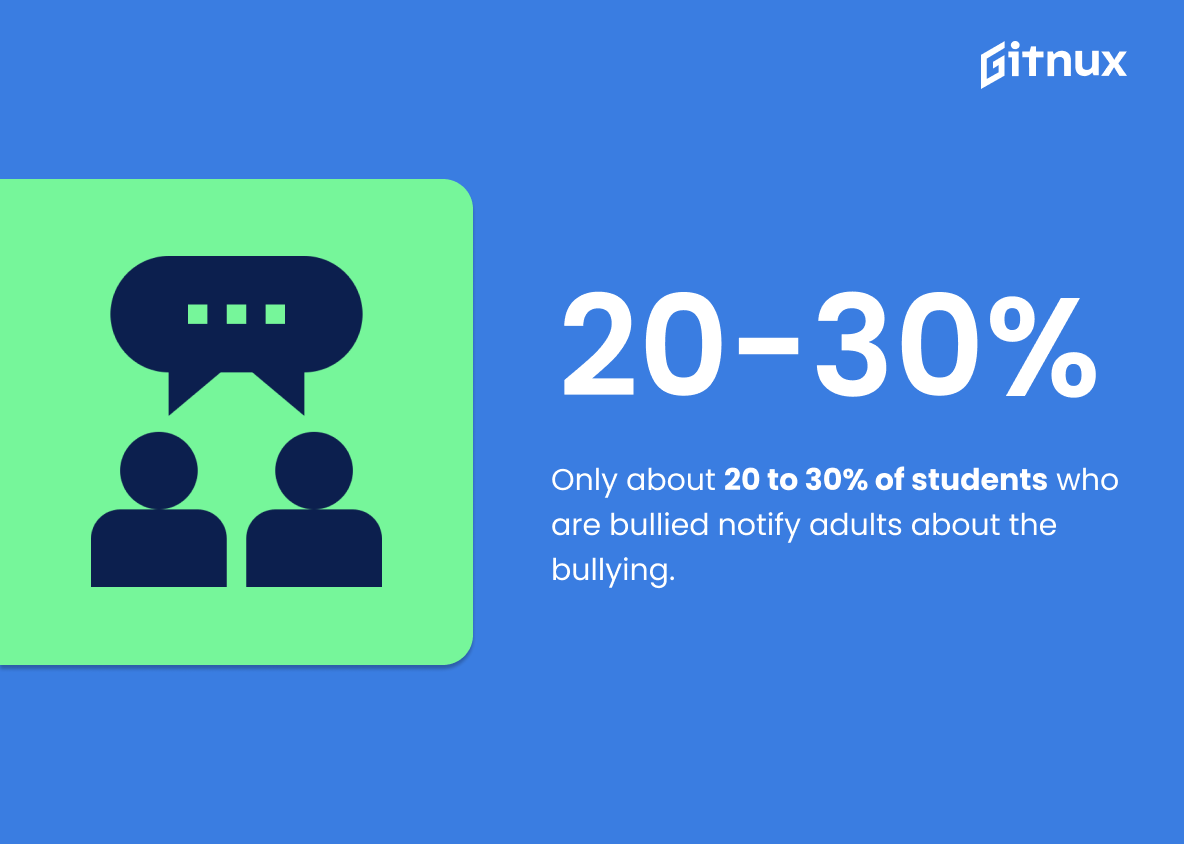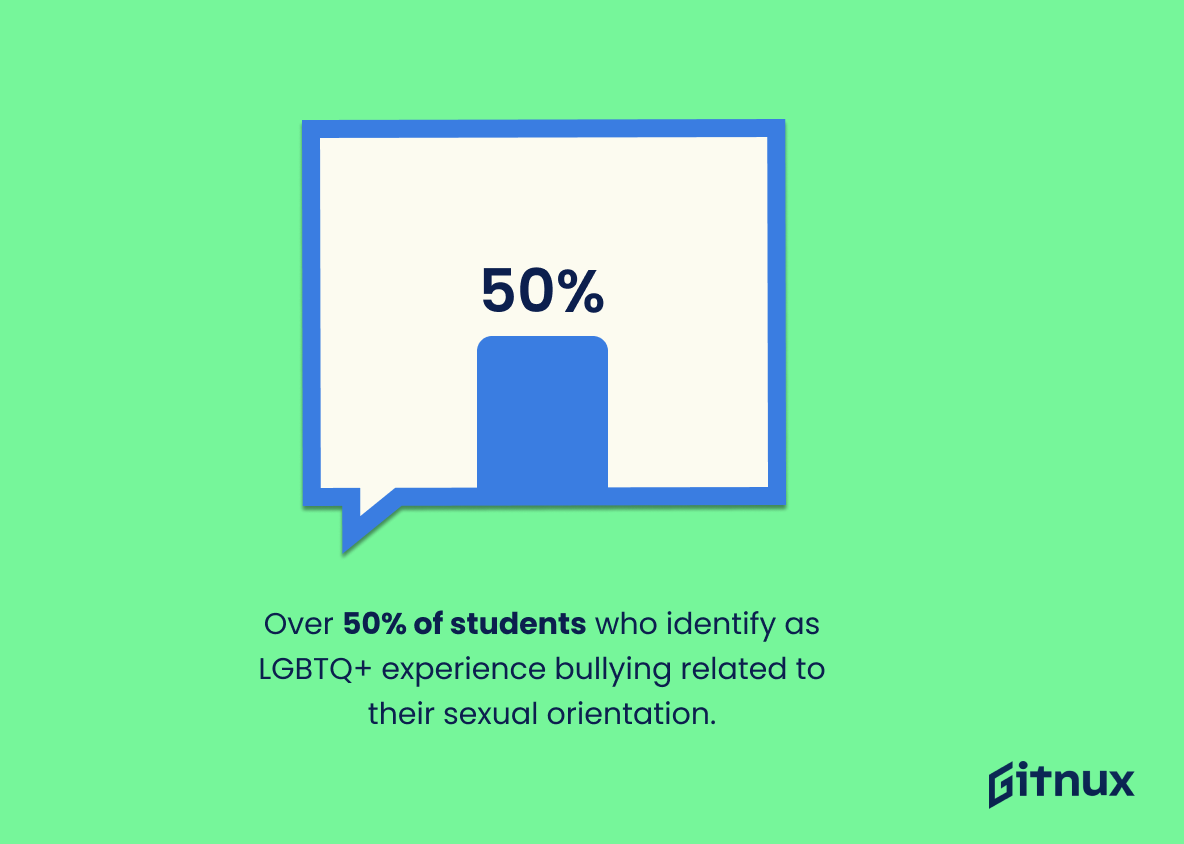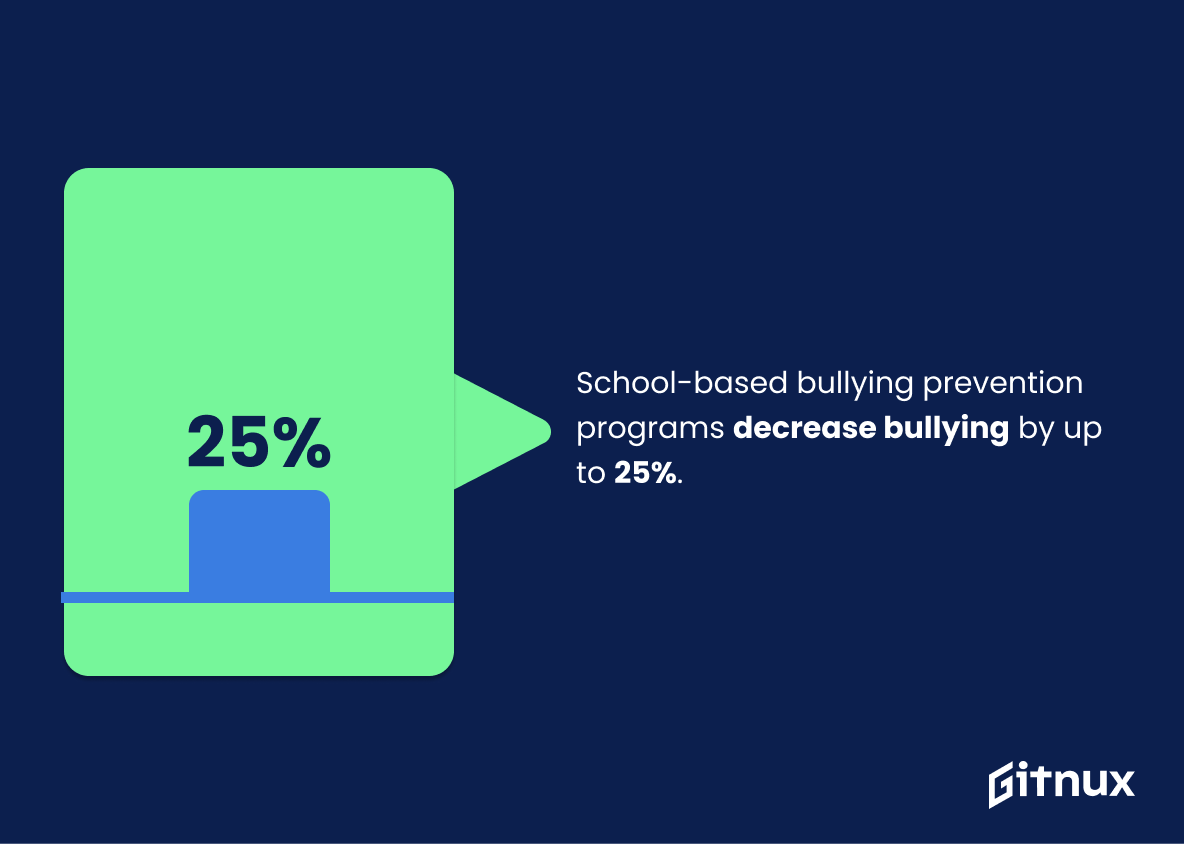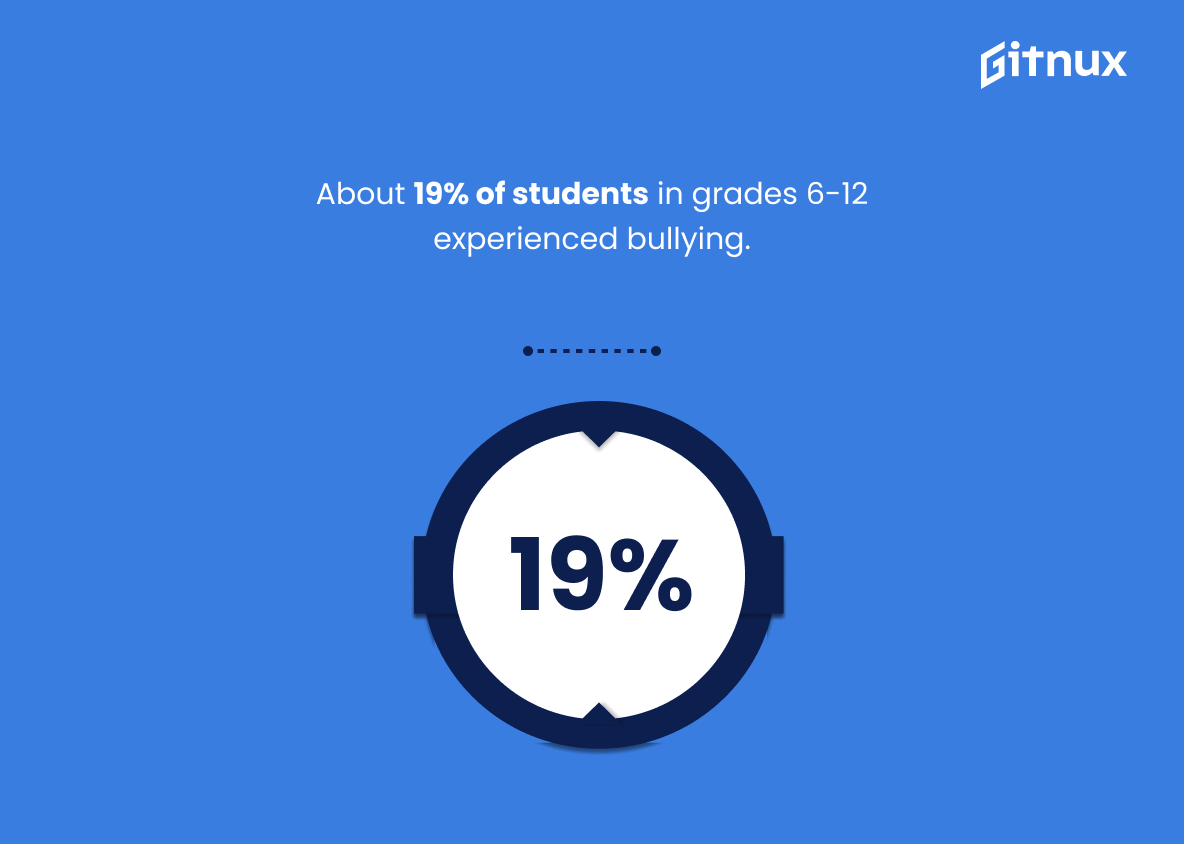In our world of learning and growth, an insidious phenomenon known as school bullying has been clouding the educational atmosphere for too long. Despite concerted efforts to curb this menace, the statistics remain alarmingly high and continue to present a troubling picture. This blog post aims to shed light on the grave reality of school bullying by presenting hard-hitting statistics.
By understanding the scale and depth of this issue, we can strive towards creating a safer, more respectful, and nurturing learning environment for our children. Delving into these school bullying statistics is not a pleasant endeavor, yet it is an absolutely necessary one. So, let’s brace ourselves to confront the harsh truth and work out effective solutions, armed with knowledge and empathy.
The Latest School Bullying Statistics Unveiled
Each year, approximately 25% of U.S. students report being bullied at school.
Reflecting upon the statistic that nearly one quarter of U.S. students report being victimized by bullying each year provides a stark reality check on the magnitude of this ongoing issue in our education system. This alarming percentage underscores the pervasive nature of the problem that a quarter slice of our student population, a sizeable group, bears the brunt of bullying every single year.
This highlights both the urgency to create safer school environments and the potential long-term mental, emotional, and academic effects experienced by such a significant number of students. Certainly, seen through this lens, this statistic becomes a rallying cry for parents, educators, policymakers, and students themselves, motivating them to take up more effective anti-bullying strategies.
Around 70.6% of young people say they have seen bullying in their schools.
Drawing attention to the rather striking figure that almost three-quarters of young individuals have witnessed bullying in their educational establishments allows a stark illumination of the prevalent issue of school bullying. The pervasiveness of the problem seeps through these digits, reinforcing the urgency for developed interventions and preventive strategies.
The data offers a snapshot of the realities of our education system, driving home the message that bullying isn’t a distant concern, but an immediate and upsetting norm for many of our youth – a crucial insight to be highlighted in a discussion about school bullying statistics.
15% of bullied students did not show up to school because they feel unsafe at least once in the past month.
Peering into the prism of this statistic, we find a startling revelation that unmask bullying as not just a schoolyard annoyance but an insidious obstacle impacting education. The data suggests that 15% of bullied students felt compelled to miss school due to safety concerns at least once over the past month. This alarming figure punctuates the crippling impact of school bullying, showing in glaring reality how it crosses the boundary from mere distress to disruption of a child’s educational progression.
It’s a red flag, signalling an urgency to mobilize comprehensive bullying prevention strategies to restore not just the dignity but also the education continuity for this significant proportion of students. This single piece of data, therefore, becomes a loud clarion call for action, a rallying cry for school administrations, parents, and policymakers to prioritize anti-bullying initiatives. Hence, it critically illuminates the depth of school bullying issue in our blog post.
14% of all high school students have considered suicide, and 7% have attempted it due to school bullying.
Highlighting this alarming statistic of 14% of high school students considering suicide, and a deeply concerning 7% actually attempting it due to school bullying, we underscore the severe emotional toll that bullying can take. In our discussion of School Bullying Statistics, these figures serve as poignant reminders of the mental health crisis brewing within our educational institutions.
They ignite a necessary conversation about preventive measures and interventions aimed at creating safe spaces for students, shifting our focus towards effectively countering school bullying. Further, they support the argument for a steadfast commitment from educators, policy-makers, and society at large to address this issue seriously and urgently.
Approximately 160,000 teens skip school every day because of bullying.
In the realm of school bullying, the immense gravity of this issue is perfectly captured by one alarming figure: Approximately 160,000 teens skip school every day as a result of bullying. This chilling number isn’t just another statistic—it’s a daily tally of lost opportunities, education sacrificed and dreams deferred— underscoring the silent epidemic of bullying that haunts our educational institutions.
It paints a vivid picture of the invisible battlefield where psychological warfare takes place, often leaving profound scars on the victims. This statistic serves as a stark reminder of the urgency to craft effective anti-bullying policies to ensure that academic sanctuaries become safe harbors, rather than arenas of fear.
Only about 20 to 30% of students who are bullied notify adults about the bullying.
Peeling back the layers of this significant statistic reveals the chilling truth of a silent epidemic, the unspoken reality of school bullying. With only 20 to 30% of bullied students reaching out to adults for help, it underlines the harsh fact that the bulk of bullying incidents sink below the radar, shrouded in silence. This alarming statistic punctuates the necessity for proactive strategies to encourage students to report instances of bullying and underscores the urgency for effective anti-bullying programs.
Highlighting this figure not only punctuates the prevalence of bullying in schools, but also illuminates the shadows where these distressing incidents continue unabated in isolation. This data blends the stirring call to focus increased attention on fostering safe communication environments for our students, and percolates the need for nurturing trust, so hidden cries for help do not go unnoticed.
Over 50% of students who identify as LGBTQ+ experience bullying related to their sexual orientation.
The contrasting veil falls when we weave the menacing thread of over 50% of LGBTQ+ identifying students facing a relentless siege of bullying due to their sexual orientation into the broad tapestry of school bullying statistics. This alarming percentage sheds blinding light on the insidious patterns, highlighting not just the magnitude but also the layered complexity of the problem. It serves as a sobering reminder that the battlefield extends beyond simple power dynamics or personality clashes, stretching into the realm of identity-based discrimination.
In other words, the bullies are not only menacing the individual, but also condemning the entire spectrum of diversity that enriches our social fabric. This revelation compels us to re-examine our strategies, shaping them into more nuanced interventions, armed with empathy, acceptance and inclusivity, to defend those who are disproportionately exposed to the distressing reality of bullying.
Physical bullying increases in elementary school, peaks in middle school and declines in high school. Verbal abuse, on the other hand, remains constant.
Delving into the heart of school bullying statistics reveals an alarming tendency: physical bullying swells as students transition from elementary to middle school, hitting a zenith during these pivotal years before ebbing in high school. Simultaneously, verbal abuse stays unvaryingly persistent, herculean in its presence throughout the students’ educational lives.
The story these statistics tell is vital to understanding the evolving battleground of school bullying. The patterns detected offer a roadmap to when, how, and where bullying may occur, and thus, where prevention efforts might be best directed. While physical aggression tends to wax and wane, verbal torment is a disturbing monster that lurks in the shadows, undeterred by age or stage of education.
Indeed, these statistics serve not merely as digits on a page, but as a clarion call to educators, parents, and policymakers. Understanding the difference in trajectory between physical and verbal abuse reveals the urgent necessity to tailor anti-bullying efforts according to age groups and forms of bullying. A one-size-fits-all solution clearly cannot rectify a problem so complex in its nature.
At the heart of creating a safer, more inclusive educational environment, lies in tuning into these tales of trends and patterns. Only by acknowledging the distinct ebbs and flows of bullying can we then weaken, and ultimately, vanquish the tide of torment pervading our schools.
School-based bullying prevention programs decrease bullying by up to 25%.
Delving into the fascinating world of bullying statistics reveals an unmissable beacon of hope. The statistic that school-based bullying prevention programs can pare down bullying rates by as much as 25% serves as a shining testament to the immense potential of such initiatives.
Within the framework of a blog post on School Bullying Statistics, this number is not a mere figure, but a resounding proof that systematic efforts can, indeed, transform the otherwise grim picture. Undoubtedly then, it paints a brighter future, suggesting our relentless determination can turn the tide, making schools safer havens for students, thus fostering a more conducive environment for their overall growth and development.
About 19% of students in grades 6-12 experienced bullying.
Unraveling the reality of school bullying, the statistic underscores the alarming fact that nearly one in five students navigating their crucial development years between grades 6-12 confront bullying. In the context of a blog post about School Bullying Statistics, this daunting revelation serves as a standout illustration of prevalence and severity of the problem at hand.
This discourse enables readers to grasp the magnitude of the bullying epidemic, potentially stirring action or propelling further discussion around effective countermeasures. Shedding light on this stark truth might also resonate powerfully with victims, reminding them that they aren’t alone in their struggles, thereby encouraging transformative dialogue and change.
64% of children who were bullied did not report it; only 36% reported the bullying.
In the intricate tapestry we’re weaving around School Bullying Statistics, picture a significant, but often overlooked, thread: A striking 64% of children tormented by bullies opted for silence, their voices eclipsed by fear or doubt. The converse reveals only a mere 36% stood brave, reporting the bullying. This statistic, a stark reminder of the weight of unreported incidents, illuminates the shattered iceberg concealed beneath the surface.
It underscores the dire need for proactivity in encouraging kids to step forward, while transforming school environments into safe spaces for open dialogue. Much like a lighthouse guiding lost ships, these figures should navigate us towards actionable interventions against the undercurrents of bullying.
17.1% of students with disabilities reported being bullied, compared to 12.8% of students without disabilities.
When diving into the gritty world of school bullying statistics, such striking disparities as the one between students with disabilities (17.1%) and those without (12.8%) stand out, demanding our attention. The heightened vulnerability experienced by students bearing the additional burden of disability acts as a compelling beacon, amplifying the call for inclusivity and empathy.
The bold numbers serve as a stirring testament to the immense, yet often overshadowed, challenges faced by this marginalised group. They not only underscore the urgency of implementing effective anti-bullying policies, but also sharpen the focus on creating educational environments where understanding trumps intimidation, and acceptance drowns out exclusion. In doing so, it becomes not just a raw statistic, but a clarion call for change, for action.
Over 30% of students who reported they had been bullied at school indicated that it had impacted their school work, their relationships with friends and family and their physical health.
Diving into the profound implications of this statistic, we uncover a startling reality engraved in the lives of more than 30% of students who have endured bullying. It sheds light on the ripple effects of this social menace, painting a vivid picture of not just academic disruption, but also detrimental impacts on interpersonal relationships and physical health.
This data is not just a number; it’s a cry for an urgent response to school bullying. It illustrates the breadth and depth of the issue at hand, adding considerable weight to the discourse on bullying in the school environment in our blog post.
Students who are obese, gay, or have disabilities are up to 63% more likely to be bullied than other children.
This provocative finding underscores the gravity of the school bullying crisis and hammers home a crucial aspect vulnerable groups face in our education system. Delving deeper into this statistic, we find that students who identify as obese, gay, or have disabilities are startlingly more likely – up to 63% – to be subject to bullying.
It’s a shocking, yet vital element in comprehending the full school bullying landscape. With this insight, it is more than just a statistic – it becomes a clarion call for immediate action, ensuring that initiatives to address and curtail bullying are inclusive and broad-based. This helps not only in creating awareness of the diverse faces of victimhood but also drives home the point of how urgently the culture of bullying needs to be stamped out from our schools globally.
67% of students believe that schools respond poorly to bullying, with a high percentage of students believing that adult help is infrequent and ineffective.
Diving into the depths of this statistic, we uncover a distressing reality lurking in our school halls – a staggering 67% of students believe their schools lack adequate response mechanisms to bullying. This unnerving figure not only paints a picture of student dissatisfaction and concern but also hints at a wider systemic failure in the education system’s approach towards bullying.
When we break down the statistic further, it is alarming to uncover that a substantial quotient of students perceive adult intervention as both sporadic and ineffective. This sentiment could potentially erode trust between students and educators, creating an environment where victims may hesitate to report instances of bullying for fear of unsatisfactory resolution.
Embedding this statistic within a discussion on school bullying drives home the urgency of the issue. It puts a spotlight on the strides yet to be made in ensuring a safer, more responded environment for our students, making parents, educators, and policy-makers sit up and take notice. This statistic serves as both wake-up call and catalyst for change, demanding acknowledgement of flaws in the system and urging for more effective measures.
33% of students who reported being bullied at school indicated that they were bullied at least once or twice a month during the school year.
Weaving the severity of the bullying issue into our mental tapestry, this statistic uncovers a jarring truth. The alarming fact that one-third of students who are victims of bullying find themselves in the tormentor’s grip at least once or twice a month during the school year, serves to magnify the chronic nature of this societal issue.
In the context of a blog post about School Bullying Statistics, such poignant figures become the piercing sirens alerting us about the unspoken reality, summoning our collective strength to combat this widespread nemesis within our educational boundaries.
43% of bullied students report notifying an adult at school about the bullying.
Delving into the realm of School Bullying Statistics, the specific data point indicating that 43% of bullied students report notifying an adult at school about their torment unfolds a significant narrative. It emphasizes the open communication lines between students and authorities, suggesting that nearly half of bullied students trust and believe in the system enough to reach out for help.
Revealing the magnitude of the students’ faith in school authorities to bring resolution, it’s a thoughtful admonition for educators to foster safer learning spaces. Furthermore, illustrating the courage of these young victims, it serves as poignant encouragement to the remaining 57% of bullied students to let their voices be heard. An enlightening chapter in the story of school bullying, this citation has potent resonance, shining a light on how this issue is handled and urging for proactive measures to counter bullying.
Conclusion
Revelations from the school bullying statistics are a stern reminder that bullying in schools is a pervasive issue that demands urgent attention from educators, parents, policymakers, and the community at large. There is a dire need for proactive precautionary measures, supportive resources, and education to alleviate this menace that’s taking a toll on our student’s mental, physical, and emotional health.
The future of our society undeniably circulates around the well-being of our children, and it’s time we act resolutely to eradicate bullying at all costs. Every child deserves an environment where they can learn, grow, and thrive without fear. Let’s pledge to create a zero-tolerance policy towards bullying and work together in solidarity for effecting this positive change.
References
0. – https://www.www.cdc.gov
1. – https://www.www.youthtruthsurvey.org
2. – https://www.nces.ed.gov
3. – https://www.www.pacerteensagainstbullying.org
4. – https://www.www.meganmeierfoundation.org
5. – https://www.www.glsen.org
6. – https://www.www.stopbullying.gov
7. – https://www.www.pacer.org
8. – https://www.www.theedadvocate.org
9. – https://www.www.dosomething.org
10. – https://www.www.ed.gov
